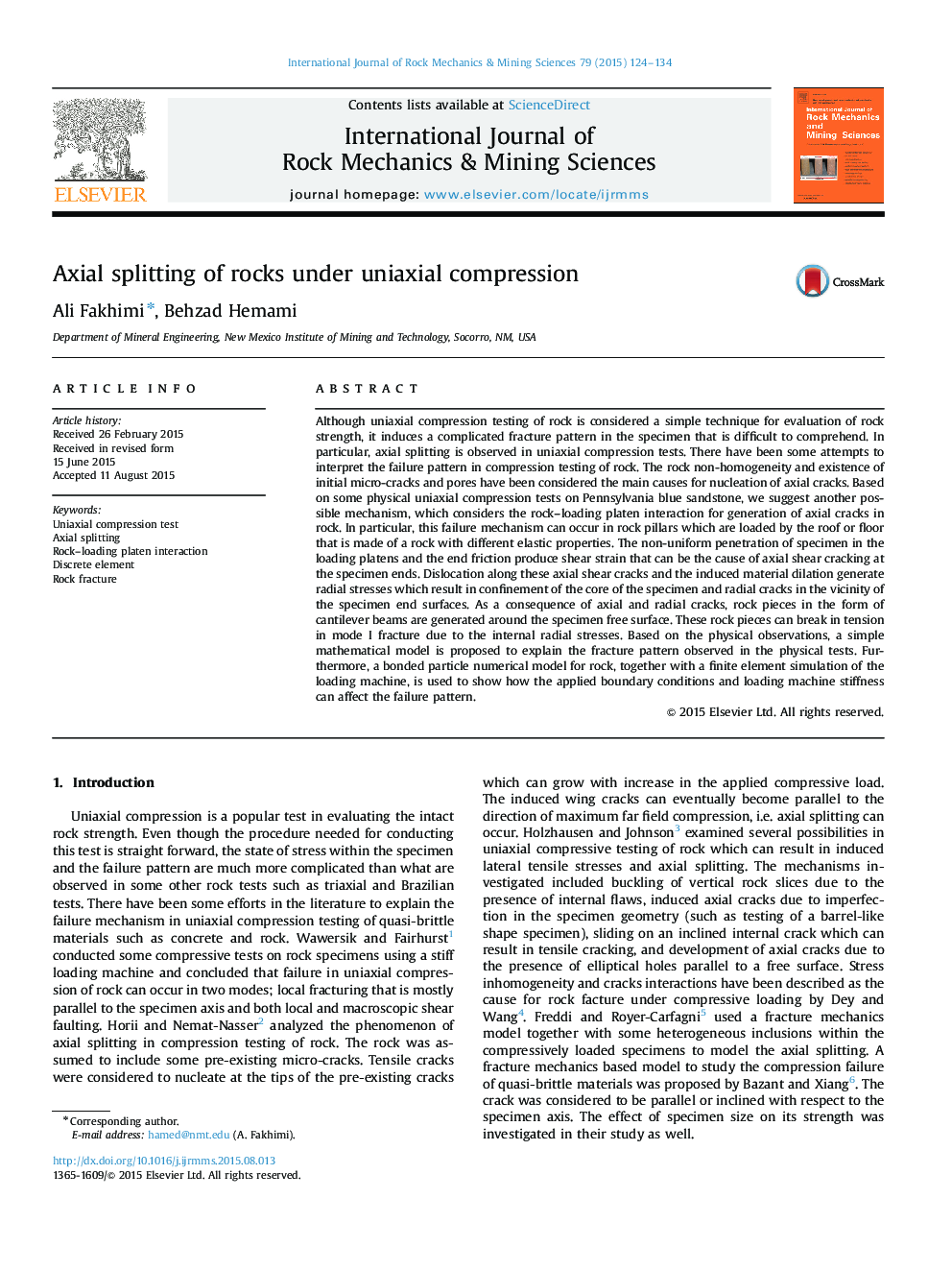| Article ID | Journal | Published Year | Pages | File Type |
|---|---|---|---|---|
| 7206480 | International Journal of Rock Mechanics and Mining Sciences | 2015 | 11 Pages |
Abstract
Although uniaxial compression testing of rock is considered a simple technique for evaluation of rock strength, it induces a complicated fracture pattern in the specimen that is difficult to comprehend. In particular, axial splitting is observed in uniaxial compression tests. There have been some attempts to interpret the failure pattern in compression testing of rock. The rock non-homogeneity and existence of initial micro-cracks and pores have been considered the main causes for nucleation of axial cracks. Based on some physical uniaxial compression tests on Pennsylvania blue sandstone, we suggest another possible mechanism, which considers the rock-loading platen interaction for generation of axial cracks in rock. In particular, this failure mechanism can occur in rock pillars which are loaded by the roof or floor that is made of a rock with different elastic properties. The non-uniform penetration of specimen in the loading platens and the end friction produce shear strain that can be the cause of axial shear cracking at the specimen ends. Dislocation along these axial shear cracks and the induced material dilation generate radial stresses which result in confinement of the core of the specimen and radial cracks in the vicinity of the specimen end surfaces. As a consequence of axial and radial cracks, rock pieces in the form of cantilever beams are generated around the specimen free surface. These rock pieces can break in tension in mode I fracture due to the internal radial stresses. Based on the physical observations, a simple mathematical model is proposed to explain the fracture pattern observed in the physical tests. Furthermore, a bonded particle numerical model for rock, together with a finite element simulation of the loading machine, is used to show how the applied boundary conditions and loading machine stiffness can affect the failure pattern.
Related Topics
Physical Sciences and Engineering
Earth and Planetary Sciences
Geotechnical Engineering and Engineering Geology
Authors
Ali Fakhimi, Behzad Hemami,
